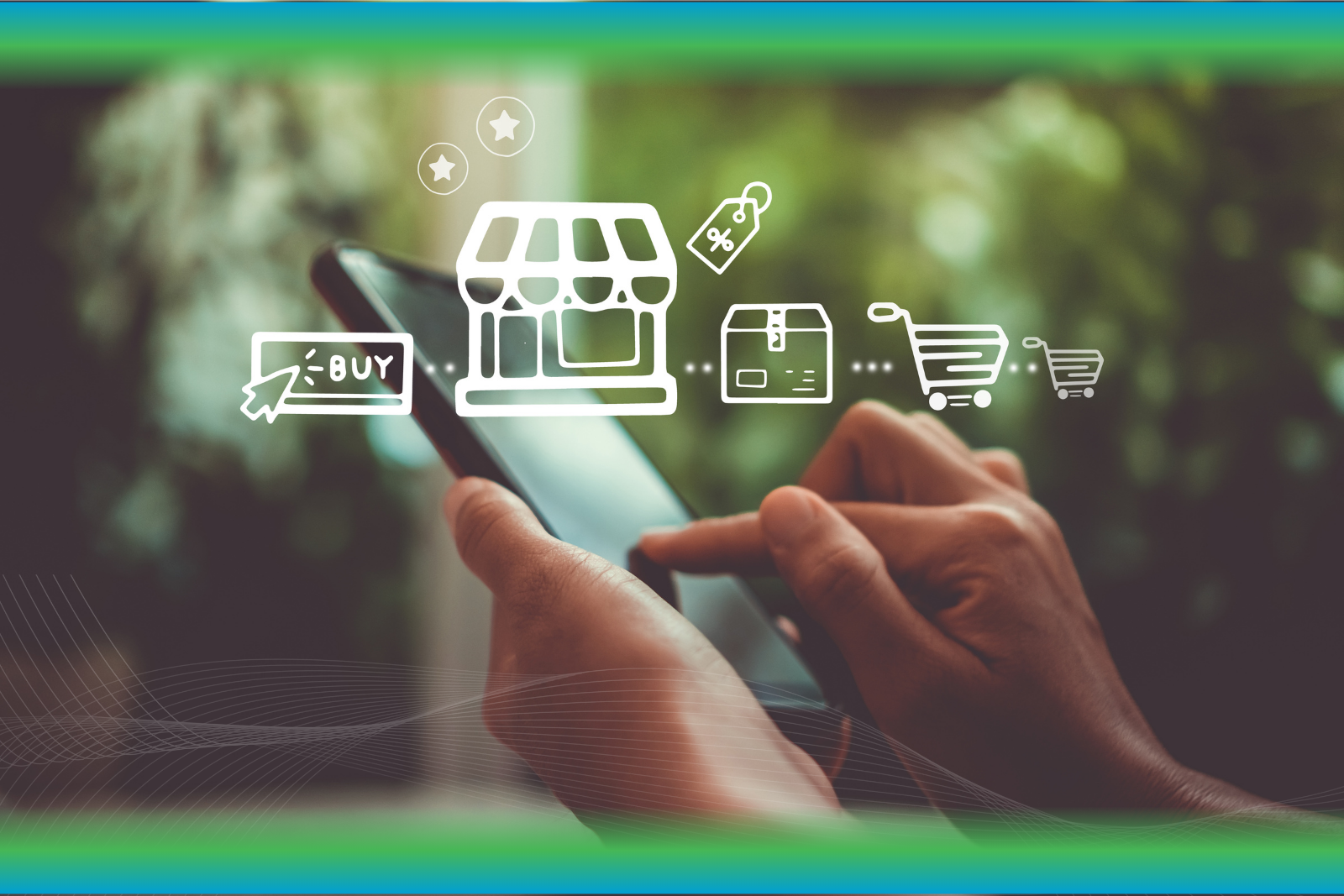
Phygital marketing for B2B
Table of Contents
- What is phygital marketing for B2B?
- What about evolving customer behavior?
- What industries or companies are already using phygital?
- B2C
- B2B
- Case study
- What are the advantages to phygital in marketing?
- Enhanced Customer Engagement
- Greater Reach and Accessibility
- Data Collection and Personalization
- Increased Convenience
- What is the future of phygital marketing for B2B?
What is phygital marketing for B2B?
The boundaries between the physical and digital worlds are intermingling almost everywhere we look. From this dynamic a new concept has emerged known as “phygital,” which is revolutionizing how businesses interact with their customers opening up opportunities for phygital marketing for B2B companies.
While not entirely new, phygital represents a significant evolution of integrating digital processes, data collection, brand affinity, and a slew of marketing engagements with physical interactions at every stage of the customer journey.
This strategy is revolutionizing customer experiences across various industries in both the B2C and the B2B marketplace.
What about evolving customer behavior?
The digital and physical worlds are no longer separate spaces but are intertwined aspects of the customer journey.
It may be clear in B2C marketing how advantageous it is to allow customers to engage with digital signage or app-based platforms that enhance a physical, in-store shopping experience, but the B2B marketing journey also needs a seamless transition between these two worlds.
Savvy B2B companies can employ this strategic phygital marketing approach to ensure that the customer experience is not only consistent but (maybe more importantly) enhanced by the convergence of the online and offline environments.
Businesses can connect with their customers in a digitally driven world while still valuing the irreplaceable physical interactions that consumers value and trust.
Let’s explore current applications of phygital marketing for B2B, analyze the advantages, and see what the future holds.
The goal of phygital marketing for B2B
is to create an ecosystem where the digital and physical elements
can coexist and enhance each other to provide a more
interactive and engaging experience.
What industries or companies are already using phygital?
Various industries on the consumer-facing side are leveraging phygital strategies to enhance customer engagement and streamline operations.
Retail is at the forefront, with companies like Amazon and Walmart integrating online and offline experiences through innovations like Amazon Go and Walmart’s Pickup Towers.
The entertainment industry is also embracing phygital approaches. Theme parks like Disney World offer an example of using wearable technology to personalize visits and integrate physical experiences with digital interfaces, enhancing guest satisfaction and streamlining operations.
Prime opportunities for phygital in B2B
Omnichannel events are where most B2B marketers experience a wide range of phygital B2B marketing engagements.
Event organizers can cater to larger and more diverse audiences by incorporating virtual and hybrid sessions, as well as incorporating technology to enhance engagement, participation, networking, and knowledge-sharing before, during, and after event activities.
Enhancing in-person engagement can be as simple as incorporating digital exhibition elements like kiosks showcasing products, services, or interactive content. As familiar as this may seem, this is phygital marketing to B2B customers.
Going a step further, B2B marketers can make use of data gathering and analytics in phygital strategies at events by using apps or integrated solutions like those provided by Dreamcast.
By analyzing data collected from both digital and physical interactions, brands can gain deep insights into ideal customer behavior, preferences, and decision-making patterns.
These insights are crucial for making informed decisions about product launches, understanding demographics, and tailoring marketing strategies.
B2B phygital marketing example: a case study
Here at WebMechanix, we’ve leaned into phygital marketing when we show up to marketing events or conferences. It takes a little planning, but the results can reap dividends for weeks or months after the event is over.
Recently, we debuted a webinar exploring the upcoming debut of Google’s SGE experience, what it means for SEO, and how organizations can best prepare. We took this webinar (which had over 500 registrants) to the floors of two different marketing conferences.
Here’s how:
- We held a wildly successful webinar (twice) with exceptional information and incredibly valuable Q&A from our Ideal Client Personas (ICPs).
- We built a landing page to play this webinar on-demand to those who signed up to view it.
- The general fear around SGE was that traditional SEO would die out. We doubled down on that idea and themed the landing page and our marketing efforts around the idea that “SEO is dead.”
- That theme gave us a unique phygital experience to bring to the conferences using hired performers to dress in funeral attire, wear shirts that said “SEO is Dead,” act as “mourners for SEO” in the entryways to the events, and hand out funeral themed cards with a QR code leading to the themed landing page for access to the webinar.
The performers and the theme were always a big hit at the conferences. It was a unique experience, it was relevant information, and it was easily accessible.
This is the magic of phygital B2B marketing – providing memorable interactions that build trust across the digital and physical.


What are the advantages of phygital in B2B marketing?
Phygital marketing for B2B offers a number of advantages that can significantly enhance business performance and customer (or prospective client) satisfaction:
- Enhanced Engagement:
By providing interactive and immersive experiences, businesses can increase customer engagement. This deeper interaction can lead to higher satisfaction rates, increased brand loyalty, and much stronger brand recall in future marketing.
- Greater Reach and Accessibility:
Phygital strategies allow businesses to reach a wider audience by combining the extensive reach of digital marketing with the tangibility of physical interactions.
- Data Collection and Personalization:
Integrating digital elements into physical interactions enables companies to collect valuable customer and prospective client data.
This information can be used to tailor experiences, predict preferences, and personalize marketing efforts, ultimately enhancing the buyer journey.
- Increased Convenience:
Phygital solutions often simplify processes, reduce wait times, and improve customer service, making interactions more convenient and enjoyable for consumers.

What is the future of phygital marketing for B2B?
The future of phygital marketing and phygital trends, particularly in the B2B market, will likely see expansive growth and innovation. The integration of digital and physical networking, knowledge sharing, and engagement with decision-makers is a fundamental evolution in how B2B operations compete.
This blend is reshaping prospective client interactions and brand experiences, making it crucial for businesses to make an impactful first impression.
Enhancing the customer journey
The boundaries between online and in-person experiences are blurring, requiring a unified brand experience that may begin online and seamlessly transition into the physical space.
Phygital strategies leverage the convenience and personalization of digital technology while preserving the positive aspects of in-person interactions.
This synergy aims to create unforgettable brand interactions that drive customer engagement, strong brand recall, repeat business, and increased revenue.
Phygital strategies leverage
the convenience and personalization
of digital technology while preserving
the positive aspects of in-person interactions.
Crafting effective phygital B2B strategies
Effectively implementing phygital strategies means brands need to understand their unique value propositions and target audiences.
Brands should develop customized digital solutions that align with their physical presence, thereby creating a cohesive and compelling customer journey from screen to real space and back again.
QR codes, mobile voting or polling options, or app-based engagement for example, all leading to personalized real-world experiences designed to leave lasting impressions that are intrinsically linked to the brand’s identity.
The role of data analytics
Data analytics is central to the success of phygital strategies. By analyzing data collected from both digital and physical interactions, brands can gain deep insights into consumer behavior, preferences, and decision-making patterns.
Insights from data are crucial for making informed decisions about product launches, understanding demographics, and tailoring marketing strategies.
Looking ahead
The future of phygital is expansive, but dependent on how brands envision their integration of digital and physical touchpoints. According to a 2022 Forrester study, 47% of brands find it challenging to connect and manage buyer journeys across these touchpoints.
Here lies an opportunity for brands to explore the possibilities of cohesive phygital experiences. Features like personalized digital rewards, gamification, or even branded AI avatars in physical spaces keep potential clients and current customers engaged.
The phygital realm is not just shaping the future of B2B marketing; it is solidifying its hold on consumer engagement across industries. As technology continues to evolve, so too will the opportunities for brands to innovate and create more integrated, personalized, and engaging experiences.
Embracing the phygital revolution is a strategic move that will come to define the future of B2B marketing experiences.
Most newsletters suck...
So while we technically have to call this a daily newsletter so people know what it is, it's anything but.
You won't find any 'industry standards' or 'guru best practices' here - only the real stuff that actually moves the needle.







